Lemon has a refreshing flavor that can’t be matched. There is nothing quite like the flavor and fragrance of lemon, whether it is freshly squeezed or put on top of your favorite seafood. So, the next time you need some lemonade, don’t you wish you could pick one from your backyard tree instead of going to the store? Then, you’ve come to the perfect location if you’re interested in growing lemons! This article will effectively teach you how to grow a lemon tree at home in the USA.
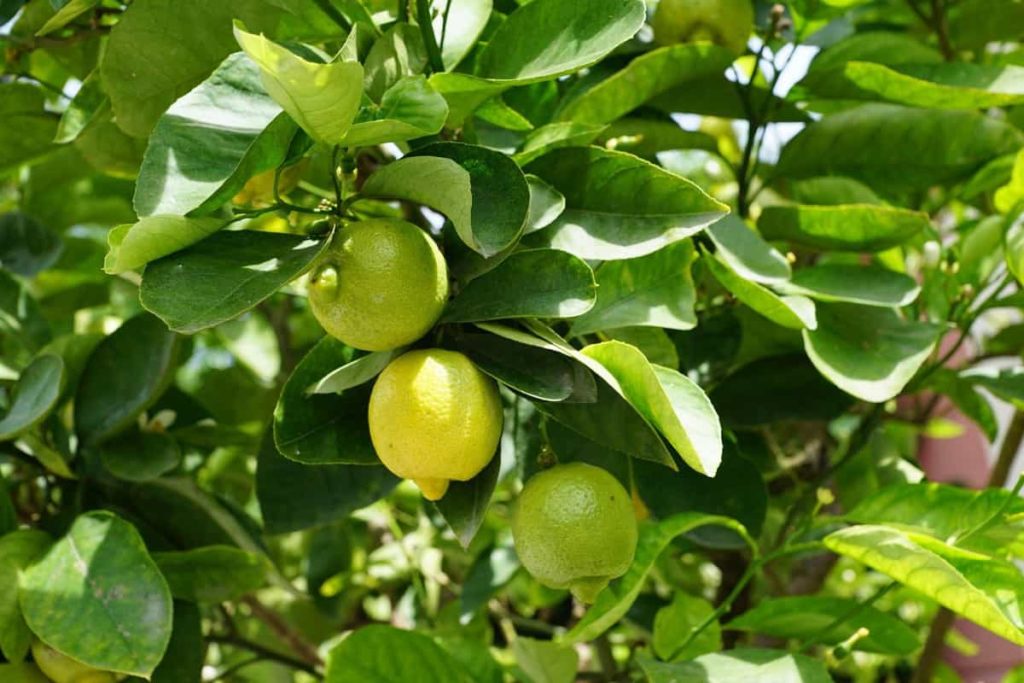
Because lemon grows best in warm areas and can survive drought, they are classified as subtropical. According to the USDA, they’re best suited to USDA hardiness zones 9 to 11in the USA. Lemon trees can survive in less-than-ideal circumstances, but the fruit they produce suffers. Water and heat are needed to guarantee a complete harvest in citrus-growing areas like California and Florida.
Also, many Indians who reside in the US are trying to grow their lemons in the backyard; for people looking for directions to grow lemon plants in their home, backyard, and pots, this article will be your guide.
A step-by-step procedure on how to grow a lemon tree at home in the USA
Choose the ideal location to plant
To grow lemons at home in the USA, first, you need to choose the ideal location. Citrus trees can be grown year-round in the hottest parts of the USA country (USDA Hardiness Zones 8-11). Still, gardeners in the colder portions of the country (Zones 7 and colder) might consider planting dwarf citrus trees in pots to have access to delicious citrus fruit year-round. If you wonder how to grow a dwarf lemon tree from seed or cuttings, the process is almost the same.
It is ideal for cultivating lemon trees on well-drained soil and in full sunlight. In warmer summers, trees benefit from afternoon shade. There should be some wind protection at the optimal site. Lemons grow better when near a south-facing wall that reflects the sun’s rays. Depending on the rootstock and variety, trees can reach a height and spread up to 30 feet. As they mature, lemon trees should have an adequate area to grow without interfering with buildings or electricity lines.
How to grow a lemon tree from seeds?
If you are wondering, do lemon trees grown from seed produce fruits? Then the answer is that the chances are less. Using a non-organic lemon might result in the seeds not sprouting, making it vital to use an organic lemon. Avoid removing any seeds that seem to be over little or shriveled. No sprouting or healthy seedlings can be expected from these seeds.
Remember that plants grown from seeds are not identical to their parent trees. New seedlings can yield fruit that is of lower grade. In other instances, no edible fruit is produced at all. However, this does not distract from the visual appeal of the young tree. While planting your tree, bear in mind this information.
In case you missed it: Best Fertilizer for Lemon Trees: Homemade, Liquid, Organic, Natural, Compost Manure, and NPK
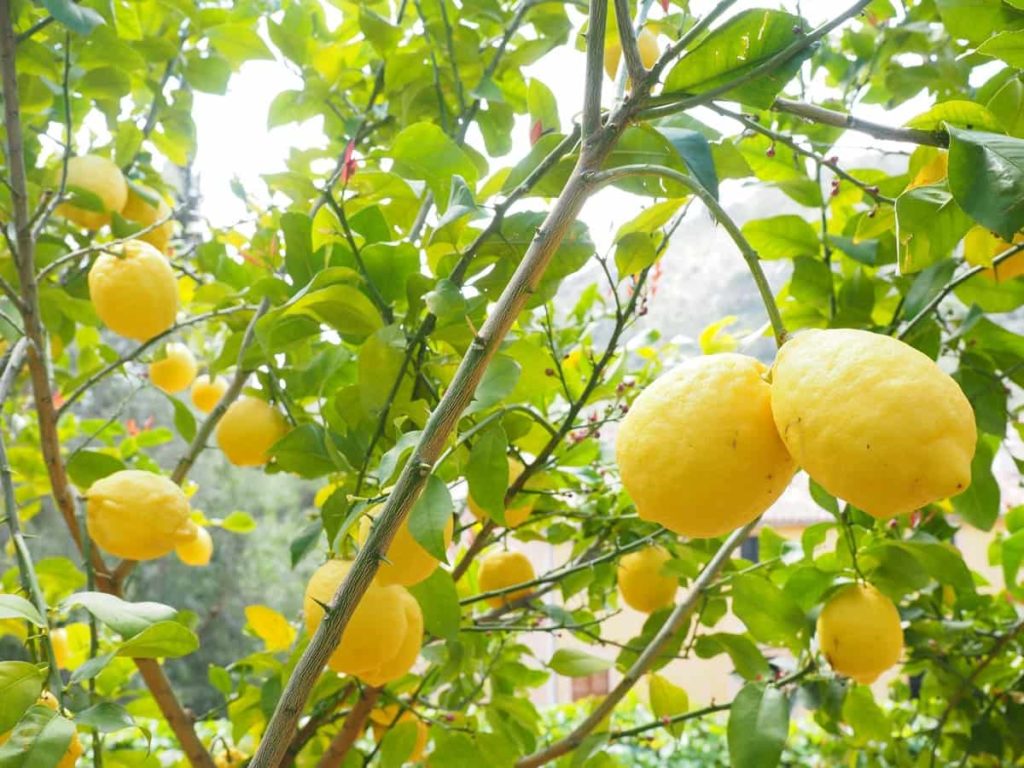
How to grow the lemon plant in pots?
Choose the ideal pot for the lemon tree
Ideally, the pot should be 3 to 4 inches in diameter and 5 to 6 inches deep. One seed can be grown in this pot. Several seeds can be planted simultaneously in a single container for some persons. The greater the pot, the easier it will be to achieve this. Drainage holes are a requirement for your pot. You will have to drill some holes in your pot without any.
Soil preparation for lemon trees
Add water to a bag of soil and mix it until it is evenly moistened. Mix the soil with your hands or a trowel until it is equally moistened. Soggy soil will cause the seeds to decay, so avoid it. You’ll need soil that drains effectively. Lemon trees like being near water, but they despise sitting in it for long periods.
Try to acquire a soil mix that has been disinfected. A process known as pasteurization removes any microorganisms that could harm the seeds. A good option would be soil with peat, perlite, vermiculite, and organic fertilizer. Drainage and nutrients are essential for seedlings to thrive.
Planting the lemon tree seeds
Lemon seeds should be planted in sets of 5 or 10 simultaneously if any seeds fail to germinate or reach the seedling stage. Keep going until the top of the soil is approximately an inch from the rim. Using a spade, dig a hole that is 12 inches deep. This can be done with a pencil or a finger. Toss the seed down into the hole, then cover it with soil. Keep the sharp point pointing down into the soil while the rounded endpoints up towards you. The sharp section is where the roots will emerge.
Cover the pot with a porous plastic sheet to keep the pot warm and wet. The first step is to cover the pot with transparent plastic cling wrap. A rubber band can be used to keep the plastic wrap in place around the pot. Next, make some holes in the plastic cover with a needle. You can use a toothpick, a pencil, or even a fork to make the marks. The plant will be able to breathe thanks to these holes.
Watering lemon tree in pots
The moisture condenses on the plastic wrap and should return to the soil, which the soil can then absorb. However, this may not occur if the environment is too dry. Water your plant if you notice the soil is becoming dry; otherwise, leave the plastic wrap on the plant. The pot should be re-covered with plastic wrap when you finish watering it. Once the sprout develops, remove the plastic cover and relocate the pot to a bright, warm spot. It is essential to maintain the soil moist but not soggy. These directions must be followed to grow lemons at home in pots in the USA.
How to germinate lemon seeds from a paper towel?
- A paper towel should be soaked in water and then squeezed dry. Smooth out any wrinkles in the moist paper towel. Your plastic zipped or resealable bag should be able to fit the paper towel.
- Consider soaking the seeds in a cup of water for a few hours before planting them in your garden. The seeds won’t dry out while you work. The seeds need to be kept wet at all times. They won’t grow if they’re left in a dry place.
- Each seed should have its gel-like covering removed. To make this, you can either rinse or suck them.
- Peel back the second white covering to reveal a brown seed below. Cut the tip with your fingernail or craft knife, and then peel off the outer shell to reveal the inner core.
- Take care not to remove the brown seed cover as well. You can see that your seed has a thin, brown coating covering it. Scratch the covering off with your fingernail.
- Put the seeds on a wet paper towel and let them soak for a few minutes. Then, to avoid tangled roots, distribute the seeds as evenly as possible after planting.
- After peeling the remaining seeds, lay them on a cloth and set them down.
- Close the bag firmly with a plastic zipper or resealable zipper.
- Keep the plastic bag in a dark, warm place until the seeds grow. Maintain a comfortable indoor temperature of 68-72 degrees Fahrenheit. It’s time to sow the seeds after they’ve sprouted.
In case you missed it: Lemon Gardening For Beginners, How To Start, FAQs
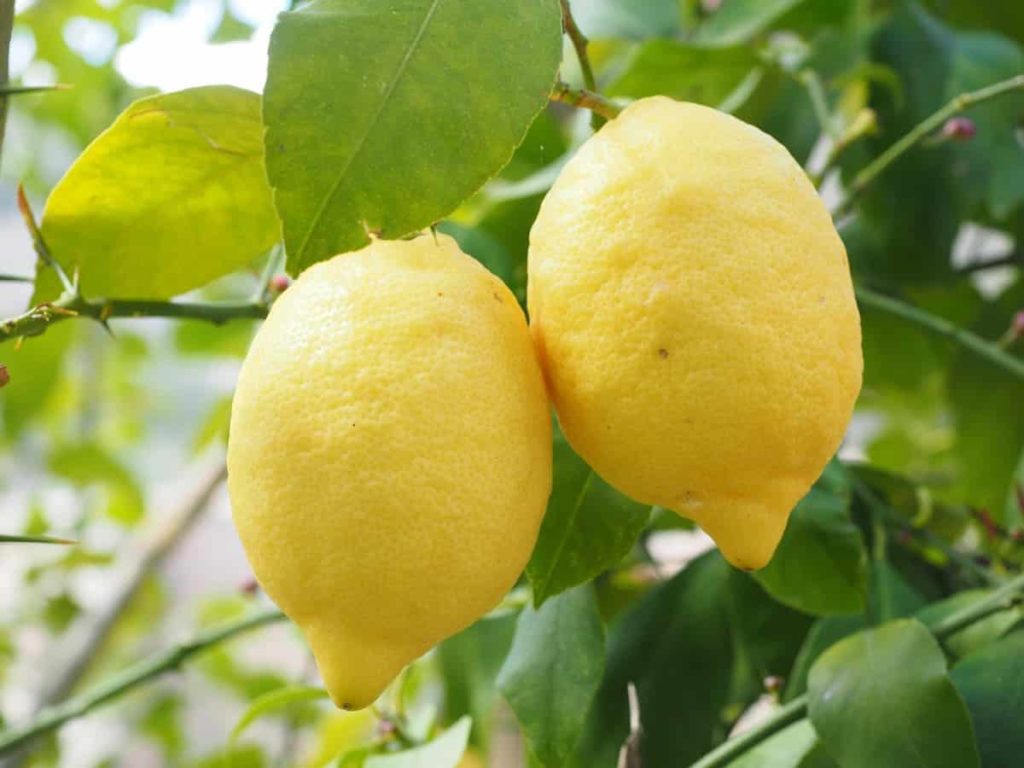
How to grow the lemon plant outdoors?
Choose the appropriate location for the lemon tree
So, if you want to produce lemons, you’ll need mild to moderate temperatures at the very least since they are subtropical fruits that thrive in warm climes and hardiness zones 8 through 11. Your lemon tree will thrive if you place it in an area of your house that receives the most sunshine, such as on the south side. Lemon trees should be planted in early spring, following the season’s last frost.
Soil requirements for lemon tree
Lemons need potting soil that is somewhat acidic and well-draining. Dig a shallower hole than the length of your root ball to ensure that the lemon tree’s root ball is above the earth’s surface. Ideally, you should drill a hole two times the diameter of the lemon tree pot. Using a shovel, fill the hole around the root ball with soil, and press the soil around it.
Watering requirements for lemon tree
Citrus trees need weekly watering, but you may not have to do as much if spring brings significant rains. Watering citrus trees can be challenging. If it’s a very rainy season, you can apply mulch to keep the soil moist. Your plants’ leaves will turn yellow and fall off if they are overwatered.
Planting lemon tree
Here we discuss planting the lemon plant in the backyard. This plant is a 1-year-old lemon tree developed from seed. First, examine the root ball after being unwrapped or removed from its container. Next, gently score the sides of the root ball several times with a knife if the roots seem knotted or develop in a circular pattern. This frees up the tangled roots and helps them to spread out.
Dig a hole approximately 1.5 times the diameter of the root ball and roughly as deep as the root ball is tall. Like most other trees, Citrus trees must be planted somewhat above the depth they were in the container; planting too deep will lead to water pooling around the trunk, which can cause decay and disease. However, the trunk of a tree may be protected from water damage by planting it slightly higher than the surrounding soil.
Add soil to the hole before putting the tree in place. Pour some water into the hole to settle the soil and wash out any air bubbles before filling it with soil. Immediately after the hole has been filled, water it down again to help settle it. Don’t add any special soil or fertilizer to the planting hole after you’re done. It’s ideal for letting the tree adapt to the soil’s nutritional levels and consistency before planting it. These directions must be followed to grow lemons at home in the backyard in the USA.
How to grow lemon trees from cuttings?
Choose the cuttings
Lemon cuttings are ideally taken in the late spring or early summer. Cuttings of six inches in length should be taken from the tip of a healthy young branch. Choose a cutting with:
- No fruit or flowers since they hinder root production by using energy.
- The base has at least two to three nodes. To produce roots, plants require specific sorts of cells found in nodes.
- No signs of damage or disease. Stunted growth and yellowed leaves are both warning signs of concern.
Using a clean, sharp, non-serrated knife, cut the stem at a 90-degree angle six inches from the tip. While carrying the cutting to your workstation, wrap it with a wet paper towel.
In case you missed it: Lemon Growing Tips, Ideas, Secrets, and Techniques
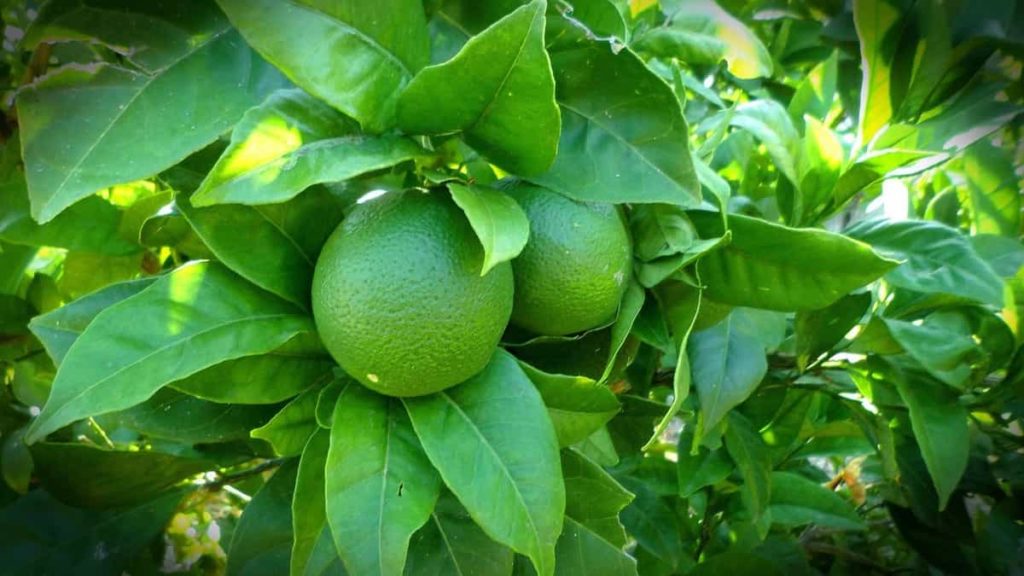
Plant the cutting
To minimize moisture loss, remove all except the four leaves at the tip of the lemon tree cutting before planting. The nodes can be seen by removing the lowest two pairs of leaves. Use a sanitized knife to cut the stem at a 45-degree angle, and then sprinkle rooting hormone powder on the end and the lowest two nodes. Make a hole big enough to retain the bottom two nodes of the lemon, cutting in the moistened growth mixture. Firmly press the mixture against the hormone-dusted stem after inserting it.
Cover the container with a transparent plastic bag to keep the lemon tree cuttings warm and moist. Then, using chopsticks or wire, hold up the bag, so it doesn’t rest on the cutting, and cut a few 1-inch slits to let extra moisture out. You should follow these points to grow lemon trees from cuttings at home in the USA.
Pollinating and pruning your lemon tree
Like other citrus fruits, lemons are self-pollinating, unlike many other types of fruit plants. There is no need for pollen from another lemon tree to produce fruit since they are self-pollinating. To get pollen from their flowers, lemon trees depend on insects. More excellent pollination leads to more and better fruit in the long run. Popular indoor cultivars should produce fruit independently, but you can assist them.
When you stop to breathe in the sweet scent of blooming flowers, gently shake the branches to aid in the spread of pollen. In most cases, trimming indoor lemon trees is unnecessary. Thorns can be found on certain lemon trees. However, most types grown inside don’t include them. Pruning thorns and any roots or shoots close to the earth should be done with long sleeves and gloves. Keeping a lemon tree inside at home in the USA can provide you with a year-round display of colorful leaves, fragrant blooms, and delicious lemony fruits.
How to grow lemon trees faster? (Fertilizer requirements)
In order to grow a lemon tree faster, give the tree a balanced fertilizer for the first few years, like 10-10-10, a few weeks after planting. In the case of freshly fruit-bearing trees, they supply nutrients to maintain branch and leaf development and restore nutrients lost during fruit formation. A “citrus mix” fertilizer is the best option. Check with a garden nursery for advice on fertilizing a tree each year.
In case you missed it: Growing Lemon Balm At Home – A Planting Guide
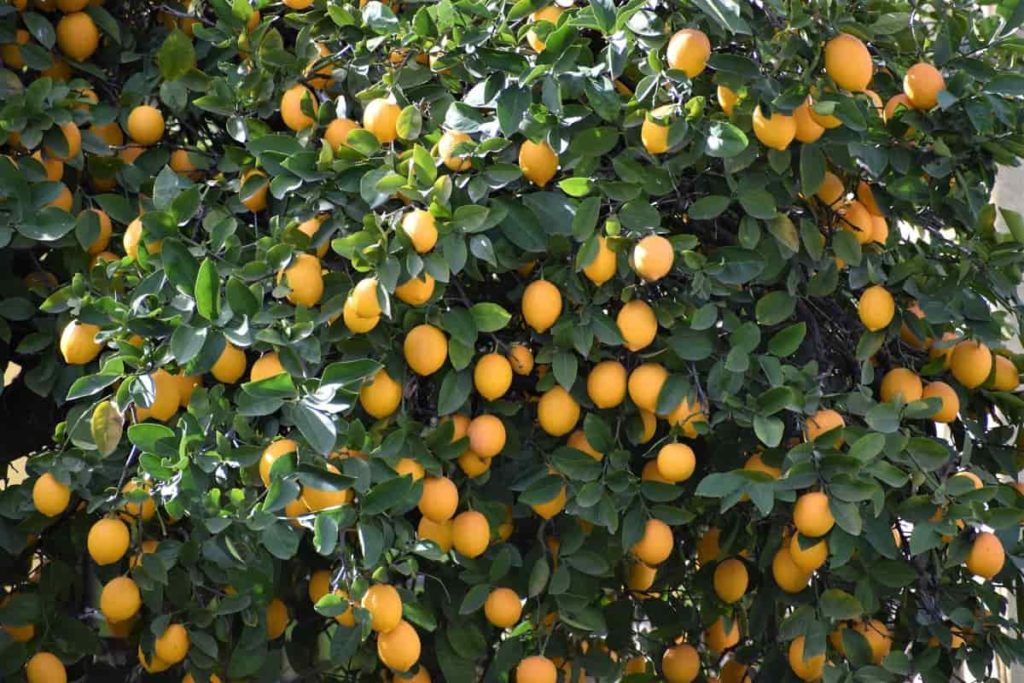
Mulching requirements for lemon trees
Since citrus plants have shallow roots, mulching is not advised. The mulch in your garden around the trees should be at least 12 inches away from the tree trunks. Although hand-weeding is preferable, pre-emergent herbicides can be used sparingly for established trees.
Dosage and application directions should be strictly followed while using herbicides. Don’t put groundcover plants near the base of citrus trees since the trees have shallow root systems that will fight for nutrients with the groundcover plants. During the spring, citrus trees bloom, and their fruit begins to form.
Diseases in lemon trees
Citrus cranker: Bacterial disease that forms yellow halo-like patches on the fruit, leaves and branches of citrus trees, citrus canker is extremely infectious. Air currents, birds, insects, and even humans are all involved in spreading this disease. Prevent citrus canker lemon disease by spraying liquid copper fungicide on the leaves. Sadly, there is no cure for an already-infected tree, and it must be removed.
Greasy spot fungus: There is a fungal disease of lemons known as Greasy Spot that causes yellow-brown blisters to appear on the underside of leaves. Blisters develop to appear oily as the infection worsens. Liquid copper fungicide must also be used in the treatment of lemon disease.
Sooty mold fungus: Fungal infection that causes black leaves is called sooty mould fungus. The honeydew secreted by aphids, whiteflies, and mealybugs is the source of this mould. To get rid of sooty mould, you first need to get rid of the bugs. Neem oil pesticides can be sprayed on the upper and lower leaves of the lemon tree. Depending on how bad the infestation is, a second treatment may be necessary for 10-14 days. After that, use a copper fungicide to get rid of the mould.
Phytophthora fungus: Infected trees develop hard, dark brown patches on their trunks due to the phytophthora fungal disease known as “brown” or “collar rot.” Oozing can also occur from the infected region. Fungi thrive in moist soil and are brought up onto trees by heavy rains or watering systems. Remove any contaminated leaves and fruit that have fallen to the ground as a first step in treating the disease—pruning the tree’s lower branches at least 2 feet above the ground. Spray a fungicide at this point.
Botrytis fungus: This is only one of the many fungal infections affecting lemon plants. It transfers from old flowers to freshly forming blossoms in the spring due to lengthy wet episodes, which are most common. Using a fungicide, follow the manufacturer’s directions for spraying the lemon tree to treat this fungal infection.
Anthracnose: Dieback of twigs and leaves and fruit discoloration are anthracnose symptoms. For some reason, it’s more common following rainy spells. Therefore, lemon trees should be sprayed with a fungicide, like Botrytis.
Overwintering
Your lemon tree should be placed in an area that is well-lit and not too warm when you bring it indoors. Even in the dead of winter, low indoor temperatures can encourage flowering like those of early spring. Once spring and summer have arrived, it’s time to take it outside and let nature do its pollinating work. In September, bring the plant inside.
In case you missed it: Growing Lemon Trees Hydroponically – For Beginners

Harvesting lemons
A year after the flowers bloom, the fruit matures to yellow and is ready for harvest. Allow the lemons to mature on the tree. They will not ripen on the tree-like other citrus fruits. When you plant lemons in your garden, you’ll be greeted with a lifelong supply of healthy, happy fruits. They’re ideal for including in healthy meals.
How long does it take to grow a lemon tree from seed?
A mature lemon tree can take anywhere from 3 to 6 years to develop from seed, with fruit beginning to appear around year five. Meanwhile, a little lemon tree that would look lovely in a container at home only takes a few months to grow.
- How to Grow Hibiscus from Flower
- Plantation Ideas for Home Decoration: A Beginners Guide
- Flower Garden Designs and Layouts for Beginners
- Planting and Spacing Techniques in Papaya: A Beginner’s Guide
- Growing Gold: Essential Techniques for Planting Pineapples
- How to Make Kalanchoe Plant Bushy: Home Remedies and Solutions
- 11 Reasons Why Your Gardenia is Not Blooming: Home Remedies and Solutions
- Eco Elegance: The Guide to Designing a Drought-Tolerant Landscape
- Gardening on a Slope: Strategies for Hillside Landscaping
- Nourish and Flourish: Top Organic Mulches for Thriving House Plants
- Everything You Want to Know about Indian Mogra Flower: Discover Uses and Growing
- Green Thumb Success: Expert Tips for Cultivating Greenhouse Pumpkins All Year Round
- Maximize Growth & Flavor: The Ultimate Guide to Companion Planting in Herb Gardens
- How to Control Rhododendron Problems Naturally: Home Remedies and Organic Ways to Fix Them
- Natural Magic: The Remarkable Benefits of Cinnamon for Plants
- Best Steps to Revive Dying Tulip with Natural and Organic Treatment
- 10 Reasons Why Your Angel Trumpet is Not Blooming: Remedies and Treatment
- How to Fix Periwinkle Leaf and Flower-Related Problems: Natural Remedies and Solutions
- How to Fix Zinnias Leaf and Flower Problems: Discover Natural and Home Remedies
- Organic Steps to Induce Lemon Tree Flowers: A Comprehensive Guide
- Bloom Booster: Crafting the Perfect Homemade Bougainvillea Fertilizer
- Optimizing Growth: A Guide to Applying NPK Fertilizer for Potted Plants
- 10 Best Homemade Fertilizers for Rubber Plant: DIY Recipes and Application Method
- How to Boost Female Pumpkin Flowers: Effective Steps for More Flowers and High Yields
- Transform Your Indoor Garden: Top Benefits of Pink Salt for Houseplants
- 10 Best Homemade Fertilizers for Peacock Plants (Calathea): Easy DIY Guide
- Unlock Blooms: 9 Reasons Why Your Potted Chrysanthemum is Not Blooming
- 8 Reasons Why Your Potted Hibiscus is Not Blooming: Fix it with Simple Solutions
- Unlock Blooms: 9 Key Reasons Your Potted Frangipani Won’t Flower
- 10 Reasons Why Is My Ice Plant Not Blooming: Remedies and Treatment
- 10 Reasons Why My Potted Hydrangea Not Blooming: Treatment and Remedies
- 10 Reasons Why is My Wisteria Not Blooming: Remedies and Treatment
- 10 Reasons Why is My Goldfish Plant Not Blooming: Remedies and Treatment
- Maximize Your Space: Ultimate Guide to Balcony Gardening with Grow Bags
- 10 Reasons Why Your Iris is Not Blooming: Remedies and Treatment
- 10 Reasons Why Your Anthurium Plant is Not Blooming: Treatment and Remedies
Excellent information!